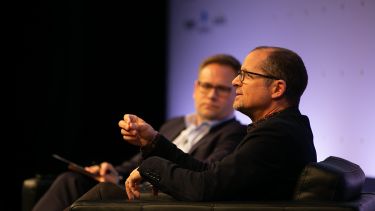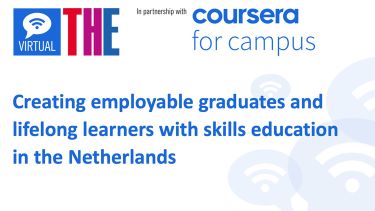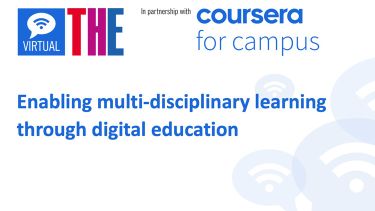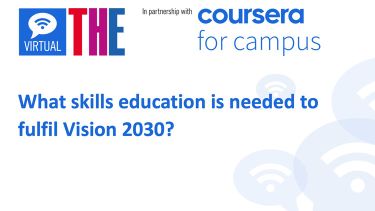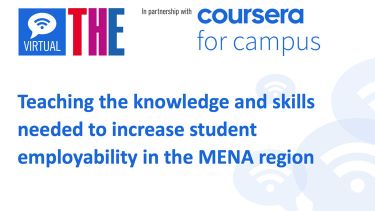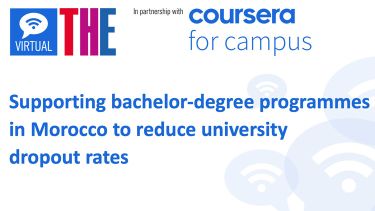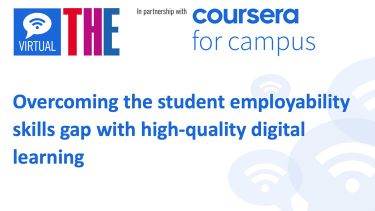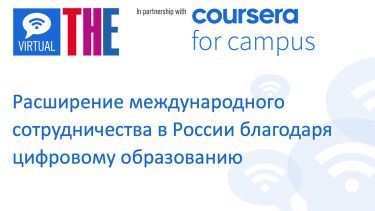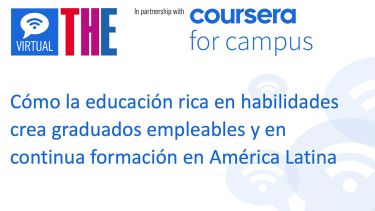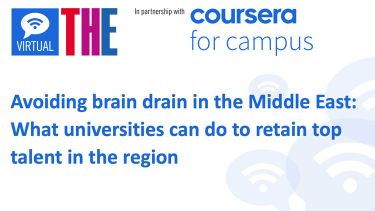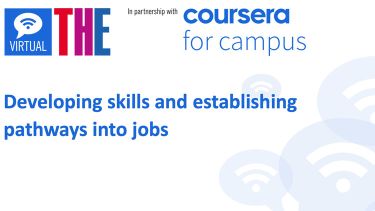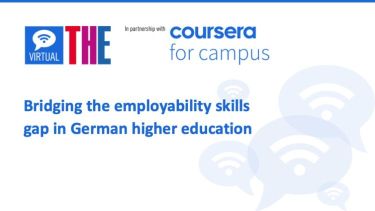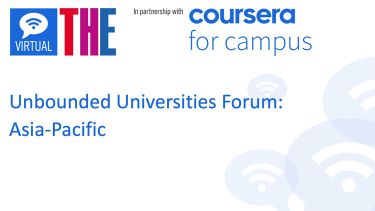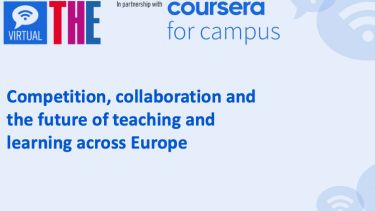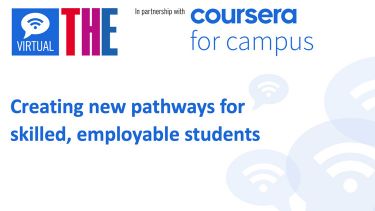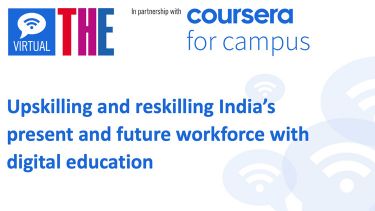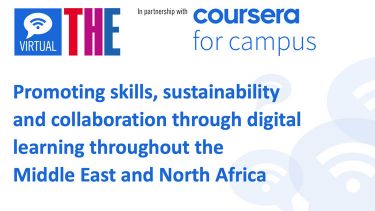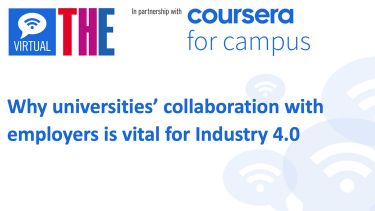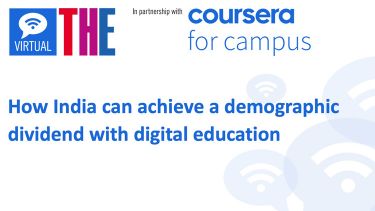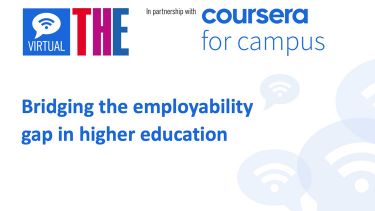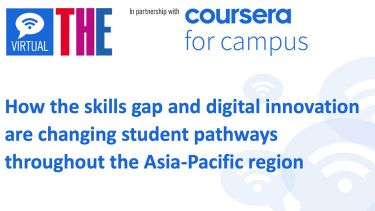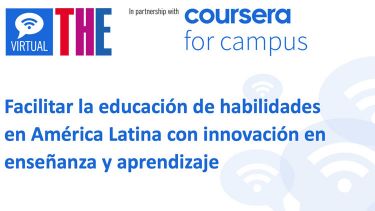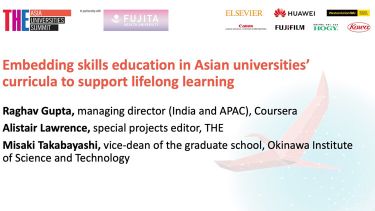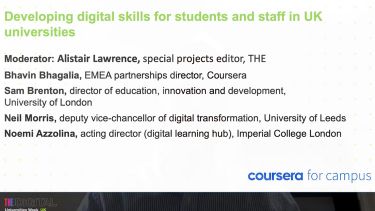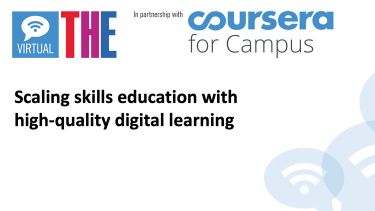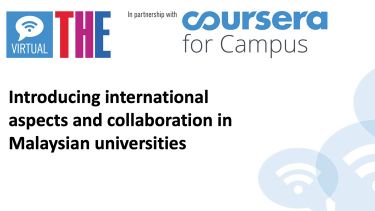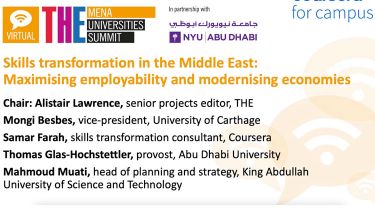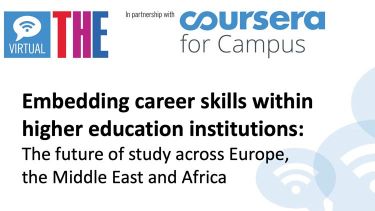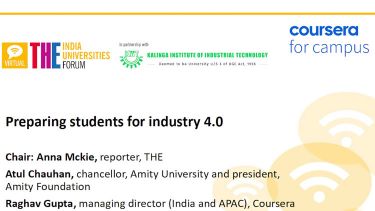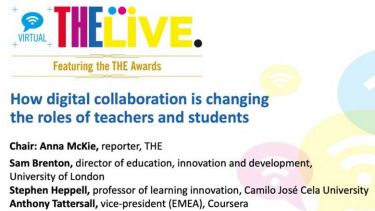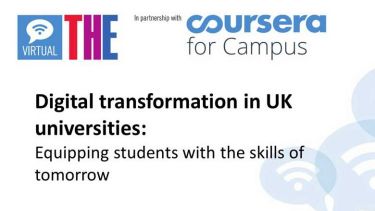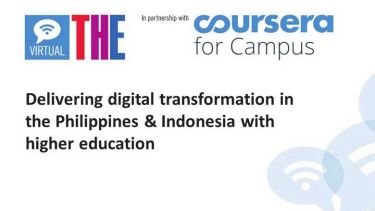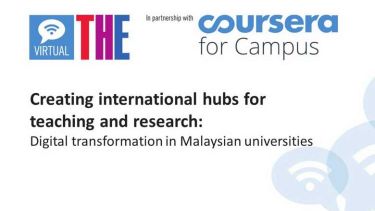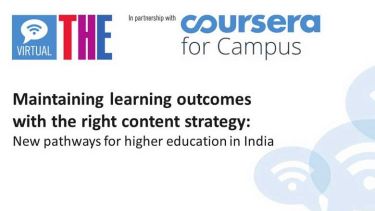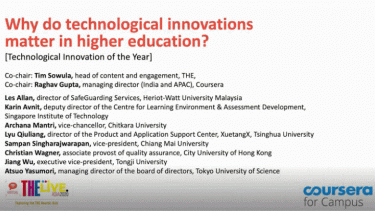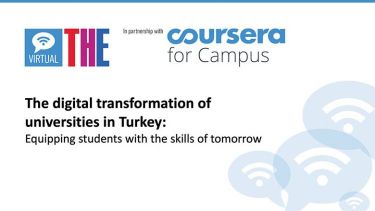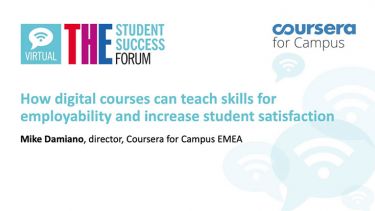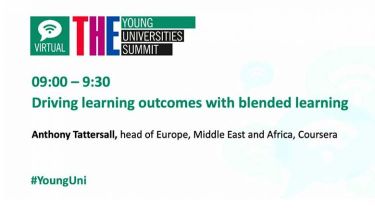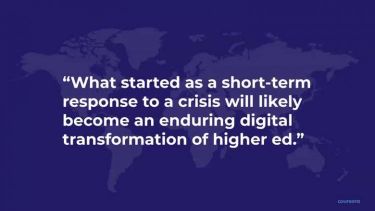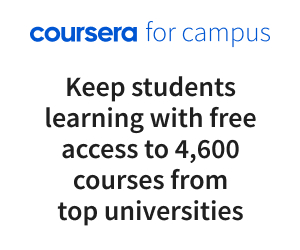Having experienced remote teaching and learning during the pandemic, students know what they want from blended learning
Webinar held in September 2021.
Students want the flexibility and convenience to learn from anywhere but still value in-person experiences and the physical location of a university, agreed a panel speaking at the THE World Academic Summit.
International higher education leaders joined the webinar, hosted in partnership with Coursera, to discuss the needs of students in the new reality of blended learning.
Chair Elizabeth Shepherd, managing director of consultancy services at THE, said that THE Student Pulse had asked more than 2,200 students from 120 countries about the impact of remote teaching and learning during the pandemic.
When asked how they would feel if one of their first-choice universities announced all teaching would be delivered in person, 82 per cent of respondents had a net positive reaction. If all teaching were to be delivered online, 26 per cent of students had a net positive reaction, while 58 per cent had a net negative reaction.
A large majority (85 per cent) agreed that on-demand access to recordings of lectures should be available, while three-quarters (76 per cent) agreed that an institution’s physical location and bricks and mortar campus was important.
Betty Vandenbosch, chief content officer at Coursera, said that the results aligned with trends the platform was seeing from its 87 million learners around the world. “Students like flexibility, affordability and stackability of job-relevant, online learning,” she said.“Blended learning is here to stay. Any lecture, anywhere, any time? Of course. It makes so much sense for people to do that part on their own time.”
Vandenbosch said that nearly half of Coursera’s learners learn on a mobile device. “We find that people want chunks. They don’t want an hour-and-a-half, they want five to seven minutes at a time.”
Susan McCahan, vice-provost of academic programmes at the University of Toronto, said students were thinking about their university experience in terms of an “aspirational identity” and were “hungry for in-person experiences”.
“Building that social interaction into classes, even online classes, became critical [during the pandemic],” McCahan said. “Students are looking for a university that has educational technology that supports in-person learning really effectively.”
Universities have to invest in content delivery and design to keep students satisfied, said Christine Ofulue, professor of linguistics at the National Open University of Nigeria. The distance learning institution serves more than 500,000 students across 103 study sites.
“If the classes are engaging, interactive and they include collaborative activities, that should help students to enjoy them a bit more,” said Ofulue. “I think what happened during the pandemic was that a lot of universities hurriedly pivoted online and basically replicated their classes online. We know from experience that doesn’t work very well.”
José Escamilla, director of educational innovation at Monterrey Institute of Technology, agreed that course content and delivery should be “student-centred” to make it engaging for the digital environment.
He also argued that lecturers needed the skills to deliver online teaching effectively. Research conducted before the pandemic by the university’s Institute for the Future of Education found that three-quarters of higher education faculty in Latin America said they lacked the skills to use technology in their teaching. Half the respondents said that they had received training but only 50 per cent of those said they were taught the right skills.
McCahan said that the sector was experiencing “pandemic hysteresis. Hysteresis means when you change the state of the system and then you change it back, you’re not going back to the same place,” she said. “We are not going back to where we were. What we would like to do is actually intentionally go somewhere else, rather than drift somewhere else.”
Watch the webinar on demand above or on the THE Connect YouTube channel.
Find out more about Coursera for Campus.




